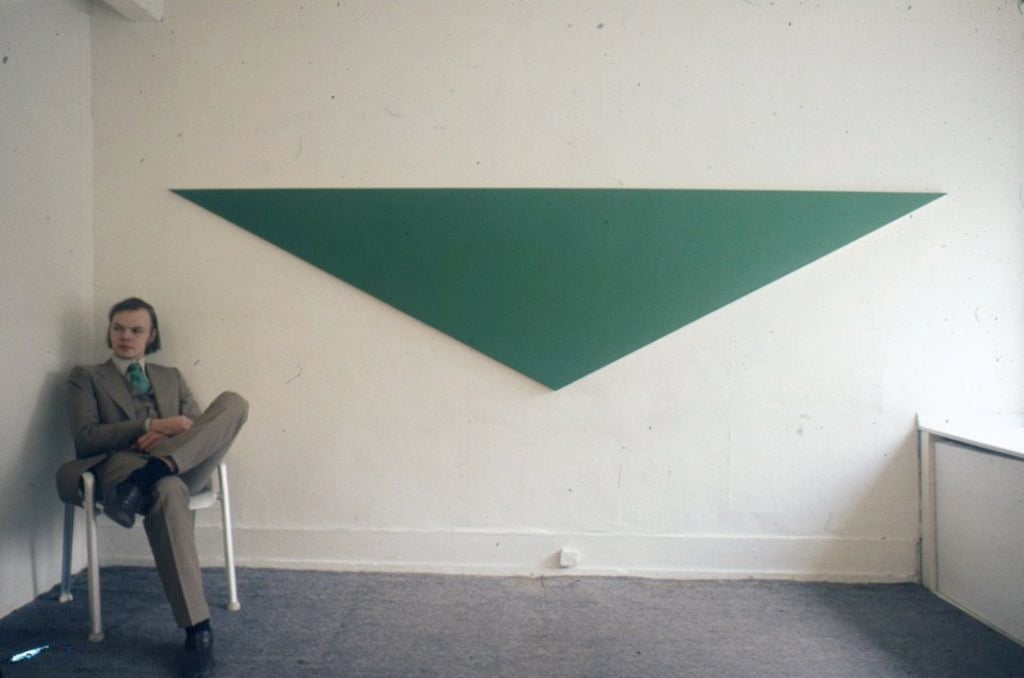Galleries
Lisson Gallery Celebrates 50 Years with Ambitious Program of Exhibitions and Publication
The tome will feature an A-Z of all artists featured in solo shows at Lisson.

The tome will feature an A-Z of all artists featured in solo shows at Lisson.

Amah-Rose Abrams

Lisson Gallery is celebrating half a century in business this year, and planning a series of exhibitions and events that will document its journey, which began in 1967 at London’s 67 Bell Street.
Far from remaining a London-based affair, however, Lisson has expanded beyond the UK, launching a space in Milan in 2011 and another one in New York in 2016, besides its two in London.
Throughout 2017, the gallery will stage a series of exhibitions across its spaces. These will include shows of new works by artists including Daniel Buren, Allora & Calzadilla, Carmen Herrera, and Anish Kapoor in London.
As part of “Lisson Presents”—which will feature on- and off-site shows in London—emerging artists will show their work alongside historical pieces.
Meanwhile, at Lisson New York, exhibitions planned for this milestone year include shows of new work by Pedro Reyes, Susan Hiller, and Shirazeh Houshiary, as well as a solo show by British painter Peter Joseph, his first in New York since the 1980s.
To celebrate this landmark occasion, Lisson is also publishing a book that will document the 150 artists who have had solo exhibitions at the gallery. Compiled as an A-Z, the book will feature artists including Art & Language, Marina Abramović, Ai Weiwei, Richard Long, Ryan Gander, and Wael Shawky.
The book, which will be over 1,000 pages long, will include letters, drawings, photographs, and other printed matter.

Lisson Gallery founder Nicholas Logsdail in front of Peter Joseph’s Green Triangle (1969). Courtesy Lisson Gallery.
“The 50th anniversary book is archival in nature, filled with 50 years of meticulously saved private view cards, artist letters and postcards, books, and other materials. Apart from charting the gallery history—including over 150 artists and 500 shows—the hand of [Lisson founder] Nicholas Logsdail is very much present, indeed he was the official photographer for the early years,” Ossian Ward, Lisson’s head of content, told artnet News.
“As for the design, Irma Boom’s work on previous books based on archives—such as the Seth Siegelaub show at the Stedelijk Museum and the Xerox book they reprinted—will give it a feel of an original document from the conceptual art era, while also being itself something of an art object, weighing in at over 1,000 pages and featuring different covers by different artists.”

Lawrence Weiner, A Removal From The Lathing Or Support Wall or Wallboard From A Wall (1968), exhibited at the “Wall Show” (1970). Courtesy Lisson Gallery.
Lisson’s journey started when founder Nicholas Logsdail repurposed his then-house to showcase work by his fellow students at the Slade College of Art in 1967.
The exhibition got Logsdail expelled, so his friend Derek Jarman persuaded him to continue using the house as a gallery. The first official show featured the work of Jarman, Keith Milow, and Paul Riley, among other artists.
Within a couple of years, the gallery was bringing big artists over from New York to show their work in London.
From the very beginning, the gallery had a focus on conceptual and minimal art, and artists including Dan Flavin, Donald Judd, Carl Andre, and Sol LeWitt were invited to stage exhibitions early on.
“The movements [Logsdail] supported soon became the lingua franca of contemporary art”, Ward told the Art Newspaper.